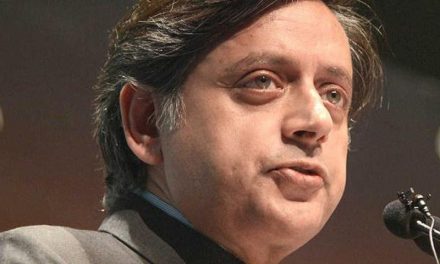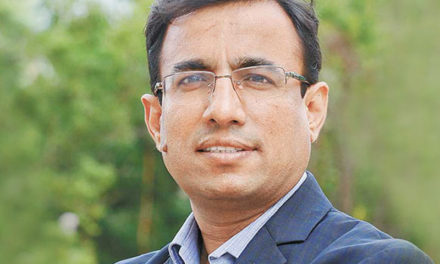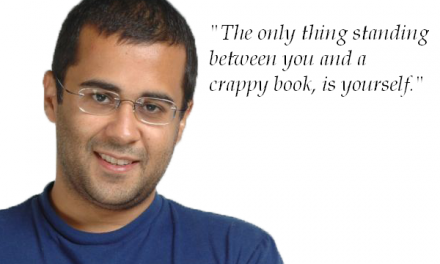It was the best of times… It was the worst of times… — said Dickens of the French Revolution. Dickens could as well have been talking about the state of IT function in corporate business today.
It is the best of times for CIOs who understand the opportunities available to help them to deliver accurate information and insights to business. Cloud computing, for example, reduces cost dramatically and has the ability to tremendously scale up enterprises’ capacity to deliver IT at a speed that was never expected earlier. Computing has become pervasive and is no longer wedded to your desktop or laptop or server. Every user, no matter his location, is always connected, and is consuming information and producing information from handheld, laptop, desktop, and other devices.
It is the worst of times for CIOs who see their job as managers of technology gear. Technology is moving faster than the IT management can catch up with. The CEO wants real time information and insight that he can use to navigate business through volatile times with certainty; the CFO wants IT to quantify the value but continues to tighten the purse strings; business leaders want to know why they cannot choose their favourite SaaS vendors that solve their specific problems; and employees are livid at controls on the usage of social networking sites at work. A CIO’s job has never been tougher.
There are some ambitious businesses who demand that a CIO should actually play the role of a ‘Chief Insight Officer’ given the exposure he has to the information about the business. Then there are businesses that only expect the CIO to do what his title says, which is deliver accurate information when it is needed, in the form that it is needed, to the person who needs it most. They also want the CIO to be the ‘Cheap Information Officer’ what with IT budgets constantly under pressure. This is not an unreasonable expectation, but that doesn’t make it any easier. Then there are businesses where the CIO ends up being the ‘Chief Manager of Technology’ who keeps the lights on, keeps the engines whirring and puts out fires.
It is not difficult to figure out which type is the most common.
It is easy enough to take positions and say that Ramu Raghavan of Canbright is how a CIO should be and Prasad of Inac India is how a CIO should not be.
However, unless one delves a bit into the past and understands how it came to be and why things are the way they are today, the inferences today and plans for tomorrow would be erroneous.
When IT entered the business scene in 1960s globally, it was all about automating the manual processes. It started with the key functions such as accounting, and payroll and the most repetitive tasks. For a long time, IT was restricted to that domain. In 1980s, IT entered the manufacturing domain, and soon with ERP coming on the scene in 1990s, IT impacted all the functions of a business. However, right from 1960s through the 1990s, the focus of IT was on automation of manual tasks and that delivered a huge benefit when compared to manual processes. It helped businesses reduce costs and improve speeds in orders of magnitude and IT was treated as “God”; no questions asked. The IT head, who almost always reported to the CFO, had his set of rules and no one dared question them because he controlled the keys to the magical kingdom.
The CIO, in turn, depended on the product vendors who created these magical products and was willing to play by the rules set by the vendors. The Microsofts, IBMs, HPs, and SAPs of the world laid the rules of the IT world and businesses played by those rules. Whether it meant defining the rules of software usage with high licence and maintenance fees or releasing the next generation computing platform and withdrawing support on the existing one, businesses were held hostage to the dynamics of the IT business and they had little choice. One heard complaints both from business and from IT heads but the benefits of IT were so high and visible that the it seemed worthwhile to compromise. So people grumbled and took it in stride.
And then it started changing…
Internet technology made everyone connected, information was easily available and consumers became the king. Suddenly information was easily available everywhere and that did a lot to demystify the power of technology. When something is available easily, it gets understood easily, and once it is understood easily, it looses its enigma and the mysterious halo.
As the first wave of automation completed its logical course, and the second wave of connecting everyone and fostering collaboration continues, it is clear that the incremental benefits of high investments in technology are not of the same magnitude as were the benefits of automation over manual processes. However, the size of investments has only grown. Businesses are demanding higher returns on their investments, better quality and higher reliability.
SaaS and Cloud computing have dealt a body blow to the model of on-premises licence software and conventional licence software is on its way out. Businesses have invested heavily in existing software, so they cannot write off those investments easily. It will take a while before the equilibrium is attained between what stays within the four walls of enterprise and what gets pushed out to the ‘cloud’.
Educational institutes, both engineering schools and business schools, started including a heavy dose of technology in their curriculum. You now get waves of fresh graduates who are not ‘in awe’ of technology but at home with all the gizmos and jargon.
The cumulative effect of all these trends as we entered the 21st century has been to create an environment where the users of the CIO no longer treat him as a priest of the high temple of technology, but as a provider of technology whose job is to deliver what they want.
The power which flowed from product vendors to the IT head became suddenly diffused and dispersed. No one group or company controlled the entire landscape and the CIO’s role shifted from being a ‘buyer’, ‘gatekeeper’ and ‘operator’ of technology to ‘orchestrator’ of technology for his business users.
As business leaders demand wisdom and insights, which need to flow from the information, which is gleaned from the endless stream of data which floats around, most CIOs continue to struggle with the nuts and bolts of technology that manage this data. The challenge here is not doing this or that. It is ‘this’ and ‘that’. You cannot lose sight of the gears and wires and aim to focus on the big picture because efficiently operating that continues to be the most basic definition of the job.
However, the difference between leaders such as Ramu and laggards such as Prasad is the approach. An approach where technology is treated as a master who has to be ‘bowed down to’ will lead to a certain place. An approach where technology is treated as a servant whose job is to enable the business and help it deliver its goals, will lead to a different place. The business and the technology leaders have to make their choices, and taste the results.
Ambi Athreya is lucky to find a friend in Jamshed who has understood the big picture and who has a confidante in Ramu Raghavan. Ramu understands the potential of technology and knows how to leverage it without getting lost in the weeds.
Prasad, Ambi’s CIO, is living in a paradigm which is fast disappearing and the sooner he realizes this, faster can he make the transition to a new paradigm where technology is not the master but the enabler if not a servant.
Anirudh Joshi heads the Business Value Group in Wipro Technologies and is based in Bangalore. The views expressed here are his own and not of his organisation
(This story was published in Businessworld Issue Dated 13-09-2010)










